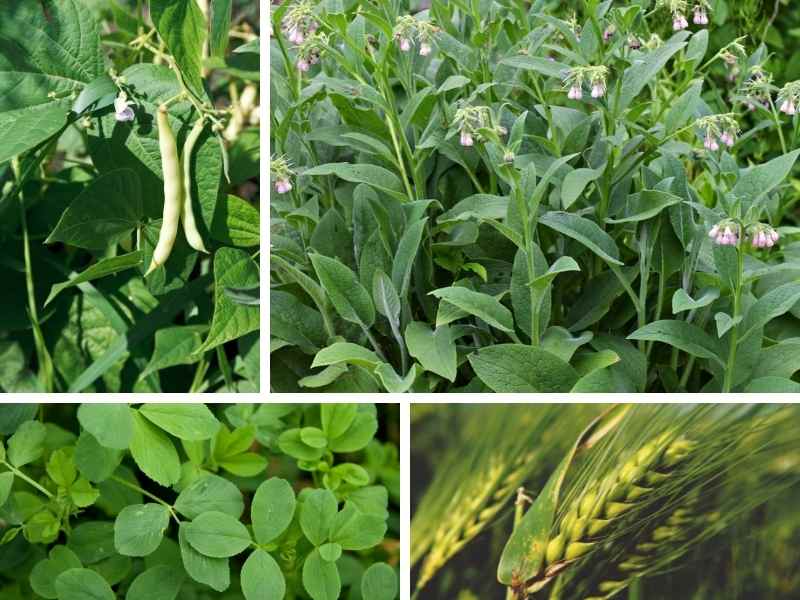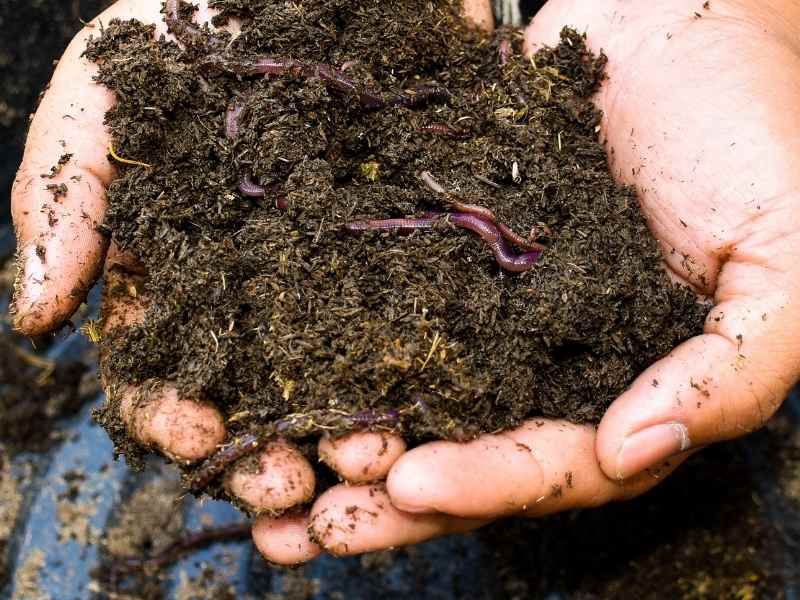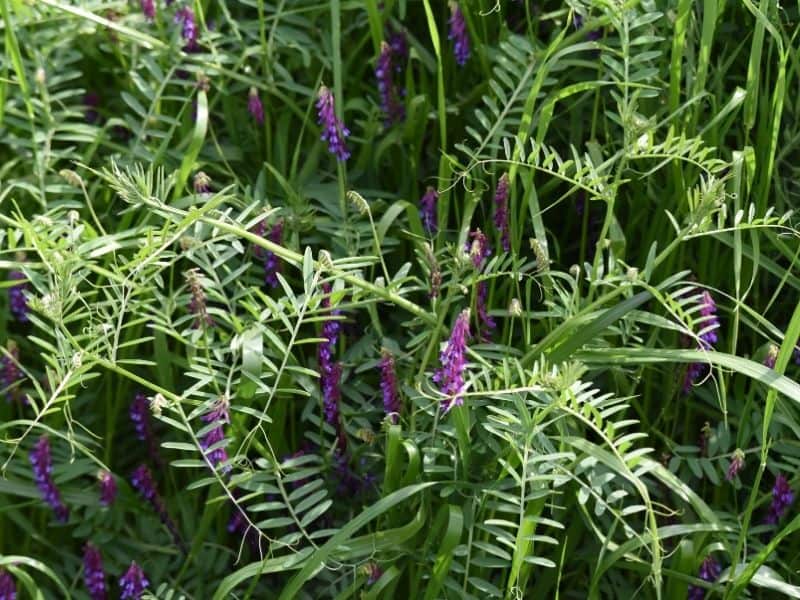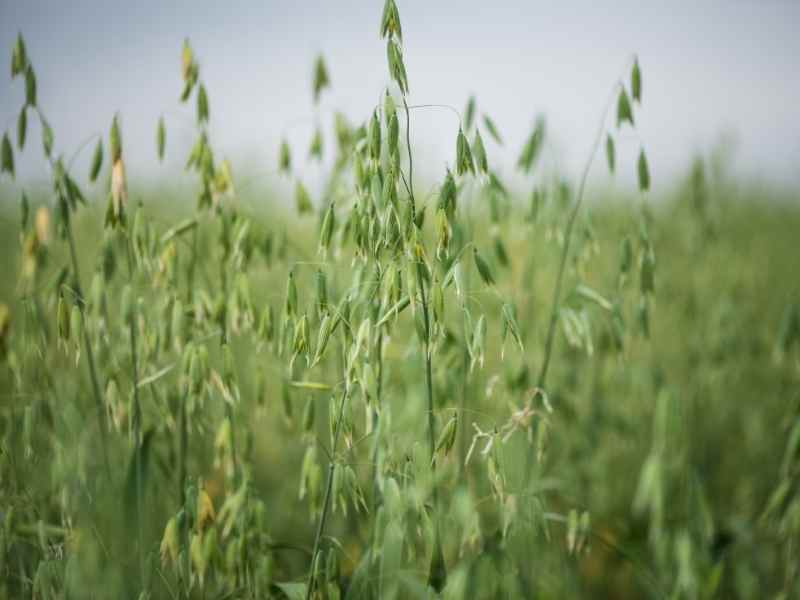Soil fertility is key in any sustainable food growing operation. Without proper management, plants will drain the soil of its fertility, leading to reduced productivity and plant health. Most synthetic fertilizers are very harmful for the environment. Thankfully, certain plants can help increase soil fertility.

The best plants for increasing soil fertility are those that are nitrogen-fixing and/or generate large amounts of biomass that can be worked into the soil. Plants such as comfrey, peas, beans, alfalfa, clover, and oats are examples of plants that are regularly used to increase soil fertility.
Though not an exhaustive list, In the rest of this article, we’ll discuss the importance of using plants to increase soil fertility and examine some of the most commonly-used soil-building plants.
Why Sustainable Agriculture Uses Plants, Not Synthetic Fertilizer, To Increase Soil Fertility
In any home and garden store, you can find chemical fertilizers that give plants a boost and increase production. While these are convenient, they can have detrimental effects on the ecosystem.
According to Oregon State University’s Extension Service, synthetic fertilizers are typically concentrated; therefore, it’s easy to apply too much to the soil–potentially damaging plants and the soil. Synthetic fertilizers often end up in nearby streams and waterways, polluting the water and poisoning fish and other wildlife.
Plants, on the other hand, release nutrients to the soil in a slow, safe fashion. Many plants used to fertilize soil are first used as cover crops, keeping soil from eroding due to wind or rain. Maintaining ample topsoil is an important part of improving soil fertility.
Plants also don’t create any harmful runoff as synthetic fertilizers do. This allows the whole ecosystem to thrive, which only further improves the fertility of the soil.
How Do Plants Fertilize The Soil?
Plants are nature’s greatest fertilizer. When plants die, they decompose and add organic matter to the soil. This organic matter is filled with nutrients that can then be used by other plants. All parts of the plants contain nutrients; the roots, stems, and leaves will all be turned into natural fertilizer.
As plant matter decomposes, it attracts beneficial bacteria and earthworms. The beneficial bacteria improve the health of the soil, while earthworm waste is full of readily available nutrients for plants to use. When earthworms are present, soil aeration and water retention improve, making the soil a very hospitable place for plants to grow.

One of the greatest benefits of using plants to improve the health and fertility of the soil is plants’ ability to sequester carbon in the soil. Through the process of photosynthesis, plants turn carbon from the atmosphere into plant tissue.
When the plants decompose, the carbon is then buried in the soil where it will fertilize plants near it. This greatly lowers the amount of carbon in the atmosphere.
Plants That Improve Soil Fertility
Nitrogen-Fixing Plants
Some of the most beneficial plants when it comes to improving the fertility of soil are called nitrogen-fixing plants. According to the Permaculture Research Institute, these plants help to turn nitrogen from the atmosphere into a form that plants can use. As the plants break down over time, this usable nitrogen is released into the soil, where other plants can then benefit from it.
Peas
There are many variations of peas, with dozens of varieties of garden peas alone. Harvesting peas must be completed correctly in order for nitrogen to be fixed into the soil.
It’s important not to remove the stalks and roots from the soil after harvest, or all of the fixed nitrogen will be removed. Instead, allow some seed pods to remain on the plant, then cut the plant at the end of the season and leave it in the garden to decompose.
Another way to use peas to add nitrogen to the soil is to plant a section of “sacrificial” peas. When the peas begin to flower, work them back into the soil as green manure. Peas contain the most fixed nitrogen during the flowering stage of growth, so you’ll get the most bang for your buck by turning them into the soil at this point.

Beans
Similar to peas, beans are a great nitrogen-fixing plant when harvested correctly. Sacrifice a few–or even the entirety–of your bean plants towards the end of the growing season to add the most possible nitrogen to your soil.
One good option is to add beans to a crop rotation, choosing to plant a section of beans to use as green manure once every three or four years. You can grow and harvest beans in another section of your garden, leaving the plants to decompose over the winter to add a bit of nitrogen to the soil.
Nitrogen-Fixing Cover Crop Plants
Clover
This is a fantastic multi-use plant. Used as an effective ground cover, it is also often used as forage for livestock. There are many kinds of clover, but white and red are the most commonly grown.
Clover spreads quickly, the flowers are edible, and the plant is often used for medicinal purposes in humans. It can also be used as a green manure, though it is a perennial that can last many seasons.
Vetch
Though not as popular as other nitrogen-fixing plants, vetch is a great nitrogen-fixing plant. Most commonly used as forage, it also makes a fine green manure (plant matter that is worked back into the soil at the end of the season). It’s thought that vetch isn’t safe to be consumed by humans, but is safe for ruminant animals (like cows).

Alfalfa
This is one of the greatest nitrogen-fixing plants. According to the UC Cooperative Extension, alfalfa receives 70-90% of its nitrogen through fixation. As one of the most popular forage choices for livestock, alfalfa serves two important purposes.
Cover Crops Commonly Used For Mulching
Many plants that do not fix nitrogen are still beneficial for building soil fertility because they generate large amounts of biomass and prevent weeds from growing on bare soil.
Many of the nitrogen-fixing plants listed above make fine cover crops, but rotational planting is important to reduce the amount of pests and bad bacteria in the soil. When only one type of plant grows on soil over a period of several years, pests and diseases thrive; planting other crops can keep diseases from taking hold.
Oats
Another multi-use plant, oats make a great ground cover, green manure, and forage for livestock. With a short growing season, it’s easy to add oats to your rotation. After harvesting other crops, you can sow and overwinter oats. In the spring, working the plants back into the soil will provide nutrients and improve the fertility of the soil.
When used as forage for livestock, oats help to improve soil fertility uniquely: with livestock manure. Waste from animals such as cows, chickens, goats, and pigs provide a massive nutrient boost for the soil as it breaks down.

Rye
This is a true cover crop plant. Cereal rye will grow later into the winter than most other plants, making it a fantastic choice for overwintering a field or pasture. By having plants on a plot of land over the winter, less erosion from water and wind will occur. In the spring, the plants can be worked back into the soil as green manure.
This plant can tolerate less-than-ideal conditions, so plant it where other cover crops have failed to thrive. Due to its allelopathic nature, it’s best not to plant it in your garden.
Dynamic Accumulators
Based on theory or anecdotal evidence, not science, the idea is that certain plants that accumulate high concentrations of minerals in their tissue release those nutrients back into the soil when they die back or are chopped and dropped on the soil surface.
Comfrey
This plant Is one of the most common dynamic accumulators used in permaculture due to its high nutrient value and prolific growth. Comfrey is a perennial that can thrive year after year in a bed of its own.
With roots that can reach up to ten feet beneath the surface of the soil, comfrey is believed to be excellent at bringing hard-to-reach nutrients closer to the soil. As it decomposes, these nutrients can then be used by other plants.

Comfrey grows quickly and its leaves can often be harvested multiple times in a single season. The leaves can be worked into the soil as green manure or composted in compost piles. Interestingly, comfrey leaves can also be steeped in water to create a “compost tea.” This tea can then be used to water plants, giving them a nutrient boost.
Comfrey leaves also work as wonderful mulch. They are placed on the ground near other plants, where they help with water retention and keeping the soil cool. Of course, as the leaves break down, they also make nutrients available to the growing plants.
Final Thoughts
It can be overwhelming trying to find the right plants to improve the fertility of your soil. Building fertile soil takes time, but the plants in this article are fast-growing, adaptable, and quickly provide valuable nutrients to the soil. By implementing these plants into your rotational growing pattern, you can create fertile, healthy soil.




What are your thoughts about using plants to increase the fertility of soil rather than commercial fertilizers? Leave a comment.